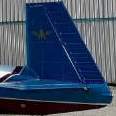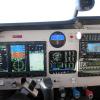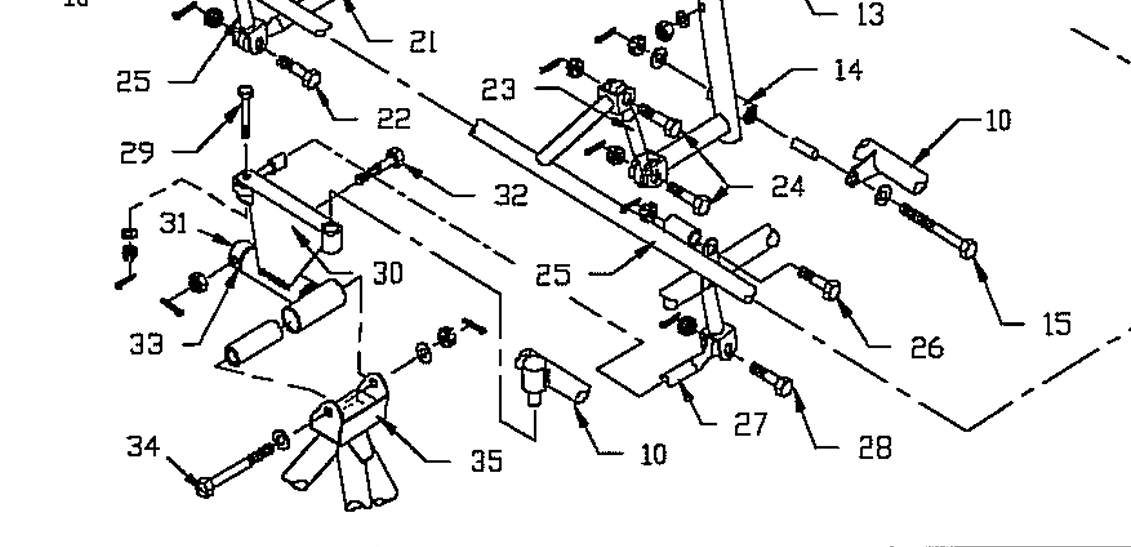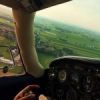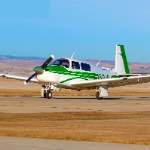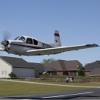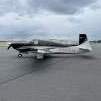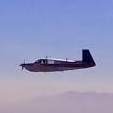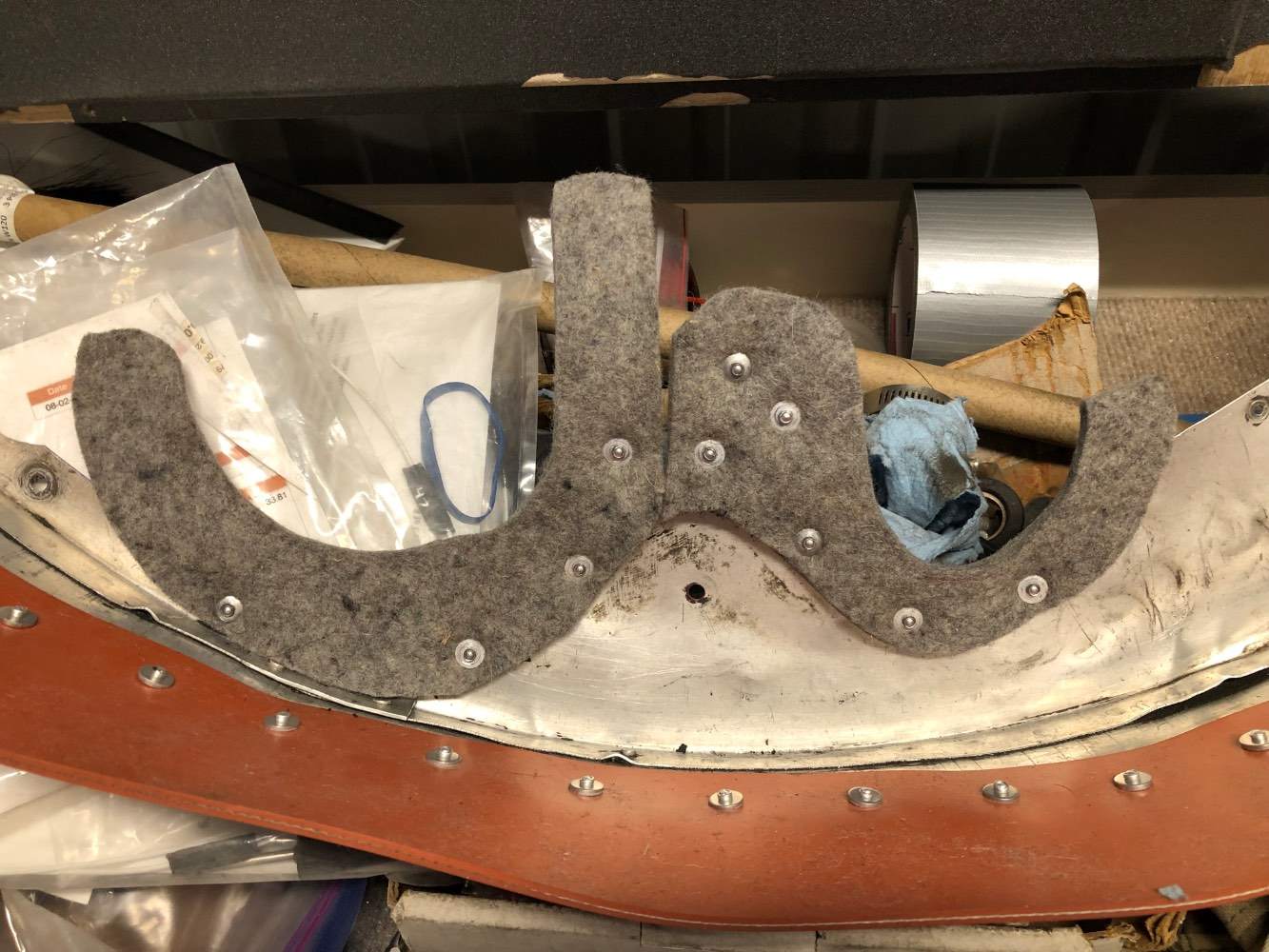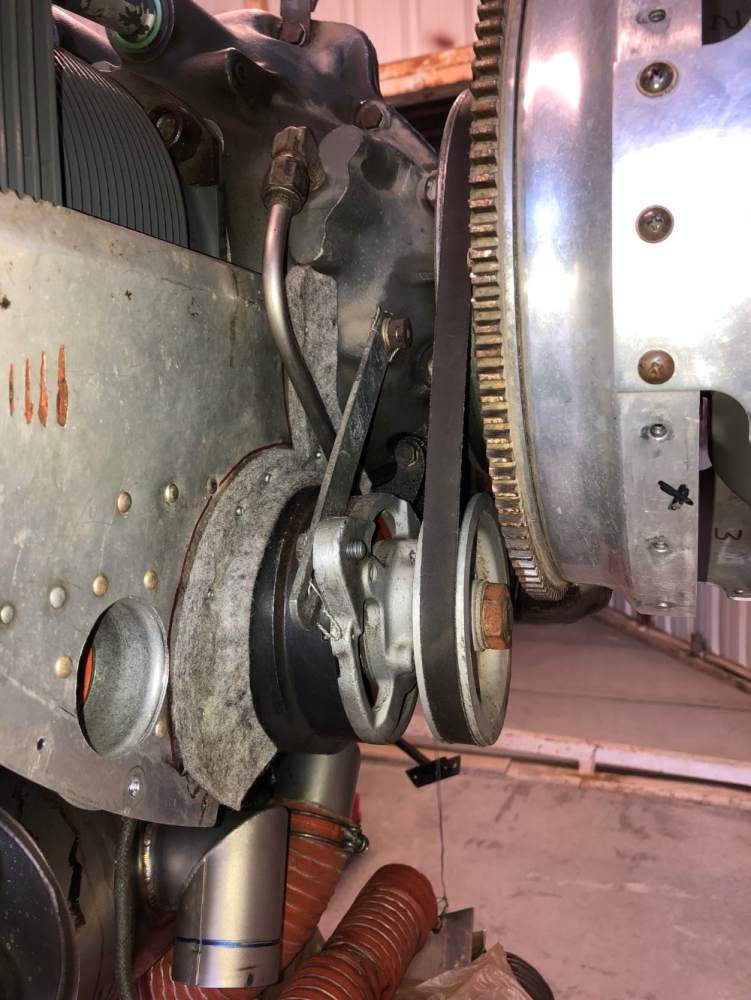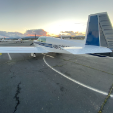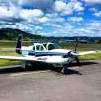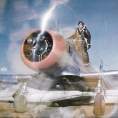Leaderboard
Popular Content
Showing content with the highest reputation on 11/14/2024 in all areas
-
8 points
-
I nominate this for the best post of the year! I think we need another button!4 points
-
I ran my engine to 2400 hrs before replacing it. It had an IRAN at about 1100, but the reason was an incident where I lost oil pressure at 19k and had to make a rapid, no power descent to a safe no power landing. According to my A&P, that caused piston slap that scored the cylinder walls, hence the IRAN. It also had a turbo rebuild at about 700 hrs, right after I got it. That turbo made it all the way to TBO without further incident. I firmly believe that the TSIO360LB can run to TBO and beyond, if the engine is run correctly. Unfortunately, I think that many of the original engines were not, and part of the fault falls on misleading information in the POH. For example, the CHT redline is 460 dF. If you ever hit 460 dF it is probably time for a top overhaul at least. The goal is 380 dF. During high, hot climbs in the summer, such as out of a western airport, the engine might creep up a little over 400, but if the fuel flow is set up correctly to generate at least 24.0 GPH in a full rich full power climb, the CHTs will routinely be around 380, and in the spring, fall and winter they will be lower than that. The POH also has cruise power settings with the engine at or just slightly rich of peak. This is the worst possible place to run an engine and will generate the highest Internal Cylinder Pressures. From my experience, any cruise power setting in the range of 70-75% HP or higher, where the fuel flow is 12 something GPH, is a “red box” setting, hard on the engine. I was able to run the now-replaced engine for hundreds of hours at 11.1 GPH/2450 RPM/34” MP. The reason for the 34” is that lean of peak operation is a fuel/air ratio and you can make the mixture more lean either by reducing the fuel flow while the MP remains constant, or by adding MP while the fuel flow remains constant. So I used the 34” to make the mixture sufficiently lean to be reasonably healthy for the engine. I was concerned about the extra work this puts on the turbo so after it hit 1000 hours from the replacement I had it borescoped by my A&P several times and there were no ill effects. The other thing to watch is cooling of the cylinders, which is affected primarily by the baffling. My old baffling was not great, but with the new engine I have been a stickler on keeping the baffling in good shape, no gaps or creases. Creases where the baffling meets the top cowling were the primary issue with the old baffling. I am at about 150 hours on the new engine. Had to run it ROP for the first 100 hrs per TCM’s break-in instructions, and just beginning to work up LOP operations again. The biggest issue when you buy a used aircraft is that you have no idea how the prior owner ran the engine. If they believed everything that is in the POH the engine may be doomed to an early top or IRAN already.4 points
-
You can download the complete FAA data now: https://www.faa.gov/air_traffic/flight_info/aeronav/aero_data/NASR_Subscription/ I do this for a living, so I'll warn you without significant time and effort, this will not be a super easy tool to reference. Yes, this is the source data that commercial vendors will use or their own navigation data (for US data). But, it IS all there. If you want to explore this data, I'd suggest you start with a tool that can read AIXM and choose the 5.1 option. There will never be a way to ingest data into your navigator beyond what you have now - that's a choice made by your navigator and has nothing to do with the vendors supplying navigation data. But, this would allow you to easily compare your data and authoritative FAA content. This will require a little peek into your navigator's AFMS - this will tell you what you can do and cannot. For my era Garmin, I can operate legally in IMC with an expired database for terminal and enroute. I do have to verify my data and the current FAA data (easy with the NASAR data) agree. Do I do this? Not a chance. I pay my annual subscriptions as (dare I say) it's a bargain in aviation terms for what it provides for me. I try not to look, but I think my Jepp costs are around $700-800 annually. Knowing the enormity of work that goes into this data validation (ever AIRAC cycle), it's frankly a bargain. Avidyne users, you might want to read your AFMS. I've only seen a couple, but both prohibit any any IFR use on expired database (including terminal and enroute). Garmin may have started doing this too, but the older Garmin navigators do grant you that option if you do the homework.3 points
-
I took the good advice here and added a set of clamping shaft collars on my jacks. A set of nice stainless collars was around $35. I put them on the jack, lifted 1/2 my truck (about 2000 pounds), released the jack valve and let it sit all night. All good, didn't budge a single millimeter. They take about 30 secs to set once the jack is in place. Kind of a no brainer. I had intended on building a set of sawhorses to size and place them on the rib Mooney specifies (as an emergency). But the collars will suffice as my backup.3 points
-
Yup! That is another smart part of the design. Not only does it "disconnect" the steering (not really of course) but it also straightens the wheel. I would say that is so the wheel well can be narrower in the cabin, but knowing Al Mooney, it's probably in case there is some slight errant breeze in the wheel well, he would want nice smooth airflow over the wheel Here's a better example of the "self centering" action:3 points
-
People can make this infinitely complex, but it's really pretty simple: First, yes the throttle position (over the normal cruise power range) at constant altitude will not affect mixture. The primary function of the servo is to meter fuel according to airflow in order to maintain a constant fuel/air ratio. The mixture does change as altitude changes because the servo measures airflow volume not mass and so as you climb the number of oxygen molecules in a given volume of air (i.e., the air density) decreases and the mixture will richen. Extra fuel beyond what is required for combustion can provide cooling and is required at high power to prevent overly high CHTs. Lean mixtures and high CHTs can cause detonation. But Lycoming approves leaning at powers below 75%, so at powers below that you can do anything you want with the red knob and not hurt anything. Makes it fun to experiment. The engine power and efficiency depend on how much air it can ingest, so throttling is counter productive. Thus, the "best" throttle position is wide open (WOT). So, if you climb a normally aspirated engine to some altitude where WOT yields 75% or less power then you are free to set the mixture to achieve whatever result you desire. Somewhere around 100-120 deg ROP gives best power, fastest speed and highest fuel consumption. Somewhere around 50 deg LOP gives the best efficiency (most mpg) but lower power and lower speed. Often at higher altitudes, peak is a good compromise. At lower altitudes you can reduce the manifold pressure to something below 75% and then it is safe to lean. This is good enough to start with. Some like to run WOT at all altitudes for the increased efficiency and there are techniques for doing this safely, but I think it is easier to just reduce power first until you really have the hang of it because it is always safe. Others will, I'm sure, disagree with me.3 points
-
I believe there was an interpretation years ago that allowed one to verify that *the* waypoints for their particular flight and approach were current, which did cover use of an expired database so long as the waypoints in that particular expired database were still current/not changed. This could be done with a review of current charts and plates, noting revision levels and such, and comparing to what was in the database. I don't believe there was any expectation that every single data point in an expired database was OK, just ones needed for a particular flight. If you routinely fly only a handful of routes and never stray, this might be feasible for a frugal owner. But the hassle increases exponentially very quickly for those that like to go all over.2 points
-
I was skeptical as well. My filter is horizontal. No mess and no waiting. The only place I can have a drop or two get away from me is the accessory case after I remove the filter. I need to remember to wipe off any residual or I'll get one or two drops. No buyers remorse!2 points
-
Where I usually fly, above 8,000', I've realized something lately. The technique of using the "Big Mixture Pull" then the Lean Find function on the JPI EDM900 to establish something like 25 or 50 F LOP, is not dissimilar from the way I was originally taught to lean an engine while a student pilot. Lean it out until it starts to run roughly, then enrichen until it smooths out. Admittedly, the trainer was carbureted vs. the fuel injection on my J, but the procedure and end result is surprisingly similar. My J will run deep LOP. The engine just gets quieter and quieter as it produces less and less power. When it starts running rough, it's waaay LOP. On long flights up high, especially in the winter, I find that the critical limit is running rich enough to keep CHT above 300 in all cylinders.2 points
-
This is precisely the reason why we should always use safety collars or safety bolts when jacking up the plane. Even if you just lift the plane to change tire.2 points
-
2 points
-
On my last airplane I had an Avidyne IFD550. At the constant requests from owners on Avidynelive.com, Avidyne worked diligently with Jepp to get the cost of subscriptions down. The last couple years I was paying $299/year for Nav Data. Then Jepp extended that Nav only price to GNS530 or 430 owners. Then Garmin changed their Nav only pricing to $299 per year. Competition is a good thing.2 points
-
I noticed quite early in my ownership that my Mooney turns tighter to the right than the left; then again, my home base didn't have a taxiway, so every takeoff and landing included back-taxi and turn around on a 75' wide runway. Turning around to the left required some braking to stay out of the grass, but to the right did not. I do have some time taxiing an A36, and didn't notice it being any different. It was turbonormalized, so everything about flying it was different, including the whole slow down to drop the gear then speed up thing, but crosswind landings and taxiing seemed quite similar to my C.2 points
-
I did an update/patch to the site software yesterday and today started seeing some odd things. I did a cache flush on the forum system and it seems to have fixed the odd things I was seeing. Hope this helps with the other odd things you all are seeing! Craig2 points
-
When I first got wing jacks for my Ovation I jacked it and left it overnight with gear down. When I returned the next day both jacks were down and one of them had leaked oil all over the hanger floor. Since then I block the jacks to prevent lowering. Another good reason to block the jacks is that one could leak down causing a gross mismatch in height and a possibility of the airplane slipping off of the jacks.2 points
-
Do not go by pitot A/S, back in the day we had to do runs over ground reference points to determine A/S error which was error prone subject to interpretation etc, thankfully now there are GPS’s and Dr Ralph Kimberlin after much discussion with the FAA finally got them to accept GPS data, believe it or not but they fought abandoning the old inaccurate way. As a GPS is an averaging thing speed wise it’s very accurate for speed as it averages errors out, I mean stupid accurate. From memory Garmin quotes .05 m/sec for steady state speed which is .1MPH? Do the three way speed run referenced earlier in the thread and forget any other data, if there is a significant difference, then the other instrument is in error, not the GPS. Do it early in the morning in smooth air, if it’s rough at all pick another day.2 points
-
This probably won’t help — but just in case When the gear is down, link 27 connected to the rudder rotates the steering horn 30 about the pin attached to the structure 10 and this turns the nose gear leg 35 to steer. When the gear is retracted, the gear leg rotates up and back about the shaft 31 and any rudder movement just rotates the steering horn around the bolt 34 at the top of the gear leg 35. Besides the limited movement of the steering mechanism that makes it easy to damage the leg when towing, there is also the fact that the steering is rigidly connected to the rudder so that when landing in a slip in a strong cross wind, the nose wheel will be off center when it touches down and you need to let it center the pedals by releasing pressure or you head for the rough.2 points
-
I have this special technique where I spill oil everywhere and then clean it up. I am interested in @Ah-1 Cobra Pilot's tool.2 points
-
When you say Piper 235, I guess that’s a Cherokee 6? How long ago did you have it, and why are you thinking Mooney? Flight time wise the difference between the two over a couple hundred miles isn’t much, but if your taking clubs etc on those golf trips it’s going to be a whole lot different in a Mooney. Now start talking flying to Colorado, Texas or something then yes it makes a big difference. I don’t golf so I assume they will fit, but think it’s not easy, possibly hard on the interior etc, whereas a 6 you can even fit a coffin as I had a friend that used to fly deceased people back home to be buried. Heck you could probably fit a house refrigerator in one leaving the front baggage area for several suitcases. Back when my Parents had a C model my Mother packed in pillow cases as there wasn’t the room they had in the C-210 they used to have, it’s really downsizing. It is very much like moving from a pickup or maybe big SUV to a Miata or other smallish sports car. They are very different machines. Find one to rent or maybe somebody teaches in one or something and get several hours in one to see if you still like it.1 point
-
Not really a disagreement with this statement but context is important. would you rather be mildly cramped in a plane for three hours, or in a car for 14 hours. that is the choice myself, wire and two daughters have. so is it spacious and plush, no.. is it worth avoiding a 14 hour drive? YES!!!1 point
-
The biggest pro that you’d notice coming from a 235 is the speed and efficiency. The 540 in your Cherokee drinks a LOT of gas and doesn’t fly very fast while doing it. A Mooney will go faster, burn less gas, not to mention look a lot better doing it.1 point
-
Nice!! I do have a CFI local that I plan to spend many hours with learning how the Mooney handles.1 point
-
I have a similar situation, I live in NW Georgia and have place in Atlantic Beach Fl, which is about a 6.5 hour drive. We make the 260nm trip in the Mooney (m20J) in about 1:45. We fly this trip about every 6 weeks. When the Mooney is home, my son uses it for business trips. It’s a great two person airplane. In my opinion, it’s not comfortable with all seats occupied. However, my son routinely takes his family of four (2 teenagers) in the Mooney. lee1 point
-
I think it's a good thing that you can now update your databases via your laptop because you miss @kortopates point: It does NOT matter if the AIM section you are relying upon (or your CFII) says it's ok...Garmin's AFM supplement OVERRULES that allowance and says it is NOT okay to use an expired database for approaches; it does NOT matter that nothing has changed (vis a vis 'last update date'). It is NOT okay to use!1 point
-
@Ronnie Pool where are you located? I’m in Atlanta and have travel boards, that I have not yet had a chance to use. I’ll have a long stretch of time off coming up, and a C model that can fly chase if you want to look at gear doors in flight. If you want to meet up for a rigging party, PM me.1 point
-
The guidance about that is is in the AIM. Keep in mind that there are two different things involved. One is the accuracy of the location of the waypoints in the database. The other is how those waypoints line up in a particular procedure. IOW, there is a difference between verifying an approach in the database is current by comparing the series of waypoints as loaded with the series of waypoints on the chart (which the AIM says we should be doing on every approach ) with verifying that the location of the waypoints themselves is accurate. And even if the guidance is permissive, the AFMS Limitations control if they are more conservative. Like the one for Hank's 430. This is about the database. 1-1-17.b.2 (b) Database Requirements. The onboard navigation data must be current and appropriate for the region of intended operation and should include the navigation aids, waypoints, and relevant coded terminal airspace procedures for the departure, arrival, and alternate airfields. That broad statement is modified a bit in the following paragraphs for various operations. Table 1-1-6 provides a decent summary and illustrates the difference between the procedures and the underlying waypoint data. The one about the charts is in Table 1-1-6 in AIM 1-1-17:1 point
-
Ronnie I have found that the poor man way of checking aileron rigging gets you pretty close to the boards. Simply check the aileron weights are streamlined and then check that the flaps are aligned with the ailerons. This should set zero just the same as the boards. Elevator takes more work and math, but I’ve done it in a pinch. (I’ve double checked with boards). On some models, like my early E, there was only one up stop on the outboard end of the flaps. Over time, they develop a slight twist, so the inboard side ends up with some reflex. I can’t recall when they added an inboard stop. Rudder rigging to ball centered can be worth a couple of knots. My E has a trim tab that gets bent. Surprisingly sensitive and notable if it gets bumped. Can’t tell, do you have retractable step or fixed aerodynamic step. The retractable step is draggy when down. It also causes out of trim rudder. That combination can be worth 3 knots. The fixed step is smaller and less draggy and only worth about 1 knot. If you want to talk, Kleen knows how to get ahold of me. You are on the right track. All of the details do add up and can get even an old Mooney close the the optimistic book speeds. Pitot leak….did your plane ever have a Brittain Alt hold? If so, they have an intentional calibrated leak built in. Many are unaware and will troubleshoot for hours. If not, disregard.1 point
-
One might exist, but I'm not aware of any panel unit which (except during updates) holds more than one nav database, let alone allowing switching between them. Having looked at both (the Garmin trainer apps allow switching), unlike charts, there are no differences in content or presentation unless there is an error in one of them (which happens). I can kind of see it for the charts,1 point
-
Obviously your on a Mooney forum asking if it’d be a good plane, first off questions answer is no it’d be a great plane. I went from a Piper Cherokee to two J models then a Bravo and now an Acclaim. Your choice should be your mission, I hate that word, or your intended use. Speed efficiency or both. As far as comfort in my opinion I’m very comfy in mine and was in all my others. A 201 is a great trade of speed vs efficiency. Your 235 hauled quite a load albeit on a lot of fuel and minimal speed. A 201 should give you 150-158 Knots at say 10gph, if you need a turbo you’ve got the premium Encore up to an Acclaim. You’ll get a lot of real world opinions here remembering we’re bias toward our brand. Good luck and enjoy the hunt for your plane. D1 point
-
Welcome aboard, @dvictory. The first question us What is your mission? Flight distance, number of people, baggage, mountains or not? If you just want to beat Cherokee 6 speed, even my little C will do that, but it has about half the cabin space you're used to.1 point
-
If you’re referring to the AIM it’s always said that and provides a much broader interpretation but it’s really irrelevant since your AFMS trumps the AIM and every Garmin AFMS since the GNS models had said you can only use an expired database for enroute and terminal mode only after verifying each waypoint of data you’ll need which really isn’t practical - and it’s not talking about approach plates. Garmin has always required an up to date database to use it to fly rnav approaches. (conventional approaches are left out since you don’t need a GPS procedure to fly them but most of us actually do anyway for the DME fixes). Sent from my iPhone using Tapatalk1 point
-
Mine is 28 volt but the Home Depot Socket idea is brilliant. Is that in the aviation section, near paint?1 point
-
Well, kinda. Here's the Limitations. I'm not sure how you would verify that each waypoint in the expired database is accurate. What's your current approved data source? And it looks like an outright prohibition on flying approaches from an expired database. Do you have an AFMS update which changes this?1 point
-
1 point
-
Generally not. Higher oil temp in this case may just be a symptom of inefficient air flow in the cowl, e.g., baffle or baffle gasket leaks.1 point
-
Awesome! This looks like a great option, thanks so much. I need to get out of student pilot mode, I have my PPL now and I guess it still hasn't sunk in1 point
-
1 point
-
A lot depends on the design of the induction system. The Piper Warrior II had a carbureted 0-320 and the POH has a procedure for setting power using the mixture control which actually results in running LOP. WOT LOP_20190615_0001.pdf1 point
-
Wow- you’re not fooling around! Now if we can only start printing out intake ducts to avoid the 35-week wait time from LASAR!1 point
-
When I was a green engineering intern, I had an idea for a 4 bar linkage. Using some cardboard cutouts and simple push pins, I brought my idea up to the Chief Engineer. We could move the push pins around to adjust the linkage length to get it to do what we wanted, and it was 1:1 scale. He was really happy about how stupid yet effective the cardboard method was. After some praise, he looked at me for a while, then looked at the cardboard. Then he looked at me again. His smile turned to a frown. "Tyler, where did you get this cardboard?" I shrugged and said I had found it downstairs in engineering, just a big box laying around. "Tyler, this the triple wall cardboard from GM. I know it sounds stupid, but this is a prototype packaging cardboard that we paid many thousands of dollars for. You cut up that box?!?!" Fortunately they had already made a determination about the cardboard and there wasn't any collateral damage, but I certainly lost some sleep over that1 point
-
1 point
-
+1 to the description above, but if you get underneath the airplane and just look up at the steering horn, and see where the nosewheel pivots on the vertical axis for steering, and then see where it pivots for retraction, you can kinda figure out how it works. It seems like a really oddball system to me and I always wonder what it does while the gear is retracting, but it seems to work fine. It's fairly easy to see how it works with the gear down, and how it does nothing when the gear is retracted, though. I helped a hangar neighbor with the nose gear on his Comanche, and that's the most dirt-simple retractable nosewheel steering system I think I've seen. Comparing the two makes me wonder what sort of life events the guy was going through that designed the Mooney nosewheel steering.1 point
-
That’s crazy slow. It should be 20 KTS faster. It is hard to imagine what you could do to it to make it that slow. It should go faster than that with the wheels down.1 point
-
If you go up to ~9000’, you can just leave the throttle full and play around with it to get a good feel for how it plays out. At that altitude, you can’t get more than about 65% anyway and you won’t hurt anything by going slow with the mixture as you lean and watch your egts. If you know the ff specifically for the power setting you want, pulling straight to that is great, but I like to see where peak is and watch each one peak, so that’s what I do. So just start leaning with or without lean find. Watch each cylinder peak, stop just after the last one peaks. Should be around 8.5-9gph for 65% power. Look at your chts, they’re cooler than 100rop. If you stop right at peak on the last one, that might be cool enough as well (and you’re running “peak egt”), but say you’re chts are around 380 and you want cooler, go slightly leaner. you’ll want to stay pretty close to peak because power drops off quicker on the lean side of peak. I disagree with not using lean find and just doing a big pull until you’ve played around with it a lot, got a great feeling for your engine, and know your exact lop power settings. Just play around up high enough that you’re below 65% power. Leave throttle full, lean to get lop and then to control desired cht. If you’re down lower, just pull the mixture back to 9gph or less as that’s 65% power. If i was learning, I’d go up higher so I could play around without worrying about hurting anything.1 point
-
Ok first off you finding peak egt and then enriching to 100ROP means you are going throught the most harsh area (50 degrees ROP) twice!!! Once going to peak and again going back to 100ROP. Only by staying 65% or less contintal or 70% lycoming is it ok because your power setting is low enough to not damage the engine even if you left it at 50ROP. So don’t be afraid to go into LOP as you already past the worse area getting there. The least damaging would be to set your power below 65% then pull mixture until engine runs rough then enrichen just until the roughness smoothes out. That is the deepest LOP you can run until you balance out your injectors better. That might be peak, just a little lean of peak or if you are lucky with your injectors being closely matched deep lean of peak. Yes any time you move the throttle it changes the mixture as well. Just readjust the mixture after your new throttle setting back to the fuel flow you had. If you increase throttle with same ff as before you will be more deep lop and vice versa if you pull back on the throttle and readjust the ff back to what it was before the throttle (MP) change.1 point
-
I have flown my Ovation several times in moderate ice. It works really good, but make sure you know your system is working 100% before you challenge it. As mentioned, turn it on well in advance, at least 10 preferably 15 minutes. Get your airplane "soaped up" and you will be impressed. That all said, don't go looking for it, but use it as an option. I always leave myself an "out", like knowing I can descend or turn around. Don't box yourself into a corner with TKS being your only out.1 point
-
You could be right....what about the prop if the blade is straight down,...what happens if one side's seal suddenly fails? Will the shock knock the plane off the jacks? Why do the commercial aviation jacks have locks? Probably just me from many years of working on cars, ALWAYS with a jack/safety stand.1 point
-
I did a video on touch and go's with rollouts keeping the nose gear off the runway. I thought I would share it with all of you.1 point
-
You guys are a bunch of princesses. I just shove a bunch of rags under the filter and wipe up the mess afterwards. -Robert1 point


